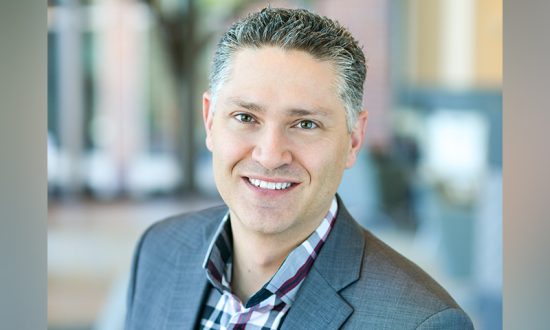Dr. Joe Sallustio is one of the nation’s foremost higher education experts. He has led a broad range of educational institutions giving him a unique and effective breadth of knowledge in on-ground and online higher education administration. Joe holds an EdD in organizational leadership from Northcentral University, an MS in organizational leadership from Regis University, and a BS in speech communications from the State University of New York College at Oneonta. He is also co-founder and host of “The EdUp Experience,” the nation’s leading higher education podcast. Early after its founding, The EdUp Experience Podcast introduced its President Series and gave voice to what’s happening at the very top of the industry — how problems are solved, how students are served in new ways, how institutional visions are giving way to a collective re-envisioning of the entire industry. In Nov 2022 he and his co-founder also published a book under the name “Commencement: The Beginning of a New Era in Higher Education.”
What do you get when you cross a Generation Z student with (what some believe) will be the Golden Age of Educational Technology? The answer is that you get a motivated, time and price-sensitive student smarter with technology than the institutions trying to serve them. Add to this equation that the cost, relevance, and value of a college degree are questioned, creating the ideal scenario for learner “growth hacks” in higher education.
Today’s students want us (post-secondary educators) to make things simple for them – and if we don’t do it, they’ll do it themselves. Tell a Gen-Z-er that you walked 2 miles in the snow to get to school and you’ll find that they are not impressed. They’ll probably reference their electronic scooter fully equipped with all-terrain tires as the reason they’ll never have to go through the same (unimpressive?) hardship that you did. Tell one of these current or future students that they have to click more than twice or use more than one app to get something done and they will find something more efficient. Even social media is becoming easier and easier to experience – think about how one might take a picture, edit it, add text or transcription, filter the photo to add graphics or background, and post it on multiple channels of social media all within one giant customizable process.
ChatGPT, released by the company OpenAI (and backed by Microsoft) is one of the most relevant and horrifying examples of technology innovation and institutional response that exists presently. Why horrifying, you ask? Because we are watching a wide-ranging adoption and denial of using ChatGPT – just look at the New York Public School System that announced that ChatGPT is being banned due to concerns about students cheating. Tell today’s current and future students that they can’t use something, and they’ll find ways to access it. As a professional reading this article, can you remember the last time you went to a meeting without your laptop or cell phone? Technology, in this day and age, is as common as eating or drinking…maybe even breathing.
Back to the point about learners hacking their higher education growth. Credential Engine, a non-profit that attempts to catalog credentials offered to learners through various pathways, notes that there are 1.076 million credentials in the United States alone. The non-credit credential movement is a “hack” of the traditional higher education degree model. Consumer (student) expectation that institutions of higher education offer credit for prior learning is another “hack” – as is competency-based education that “hacks” the time required for degree completion. In my recent book, Commencement: The Beginning of a New Era in Higher Education, co-written by Kate Colbert, I referenced a story of a business that capitalized on disruption:
“Back in the “old days, when you wanted to watch a movie on a Friday night with your family, you’d all get in the car and head down to your local video store and pick up the new release on VHS. Eventually, the smaller and higher-definition DVD came onto the scene (laserdiscs were in between) and an upstart company thought it might be convenient for you to not leave your house and instead receive your DVD in the mail. Like me, you probably loved the idea of this mail-delivered movie, and you stopped going to the video store. Have you heard this story?
Then, technology advanced again and, in the early 2000s, we experienced the proliferation of the internet, the evolution of the iPhone, and, you guessed it, streaming video. The company that was sending out DVDs in the mail cannibalized that business and went “all in” on streaming, while the video story company doubled down on its traditional business model.
Any idea what companies I am referencing in this story? Yep, you guessed it. Blockbuster and Netflix. It’s a classic story of embracing disruption, adopting emerging technology, and taking calculated risks.
What will be the story of higher education 10 years from now? More importantly, what will the story of your institution be 10 years from now?
Conclusion
This story is all about how both business/industry, and consumer value relevance combined with convenience. The desire for relevance and convenience is what drives how we experience and expect technology to enhance our lives. The same is true for higher education and students – and though this article references the digital native expectations of Gen-Z, let’s be honest and recognize that all generations today have some type of technological expectation for their learning – just think about the number of times you sat and read paper directions versus looked something up on YouTube. Rather than be worried about ChatGPT or other AI technologies, higher education should be working to integrate them into their teaching and learning methodologies – because the student will use the technologies to complement or supplement their learning despite how we (higher education) feel about it.




